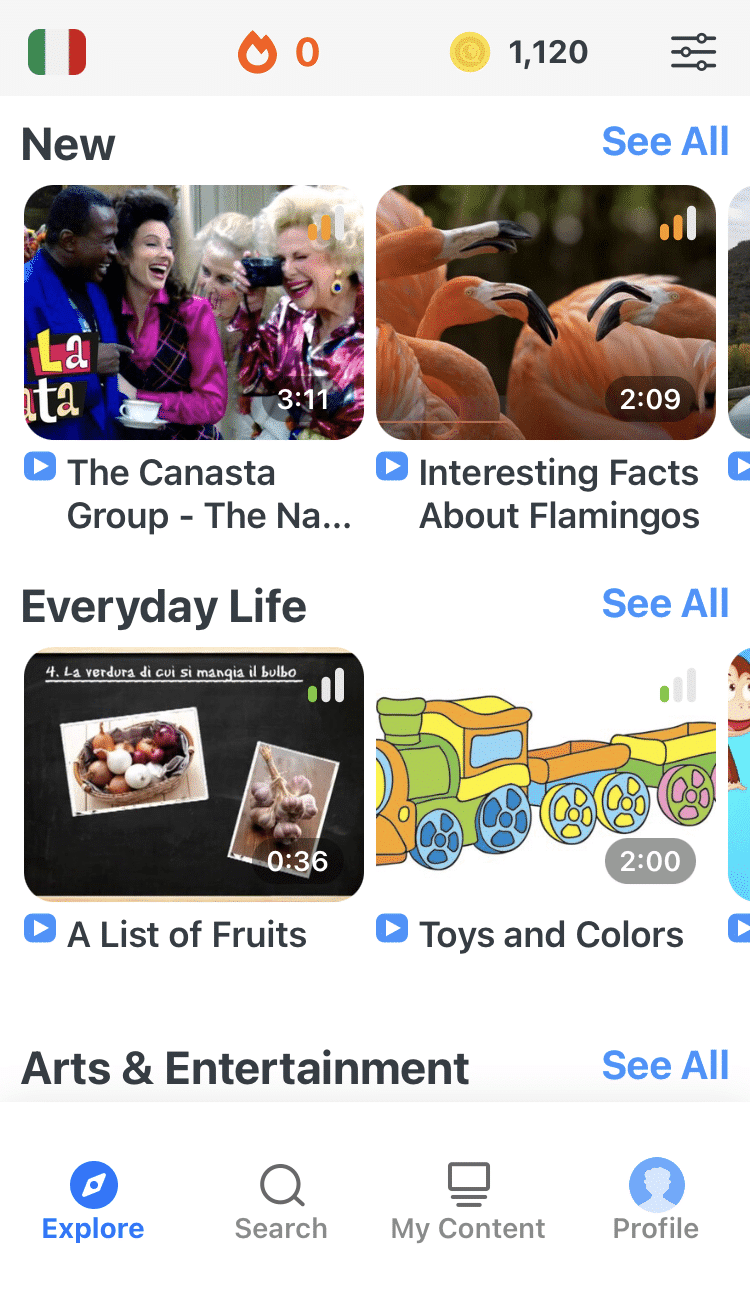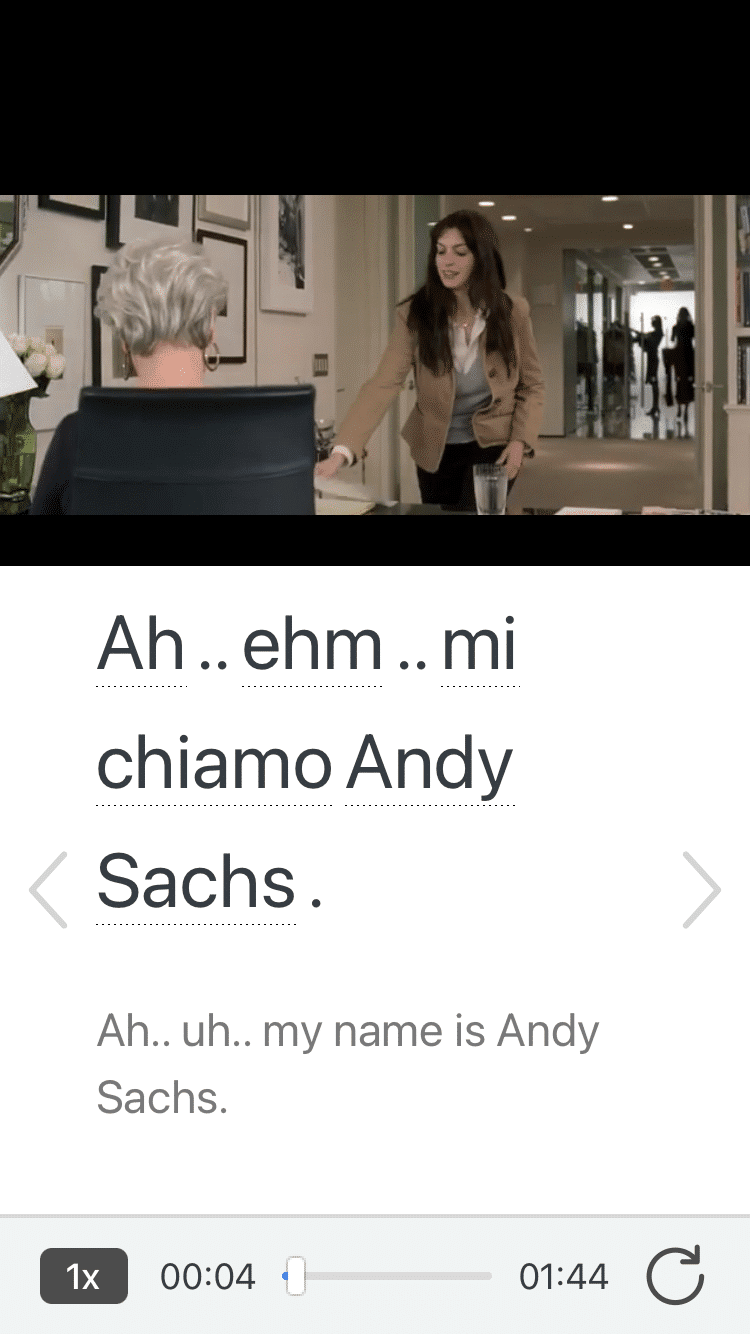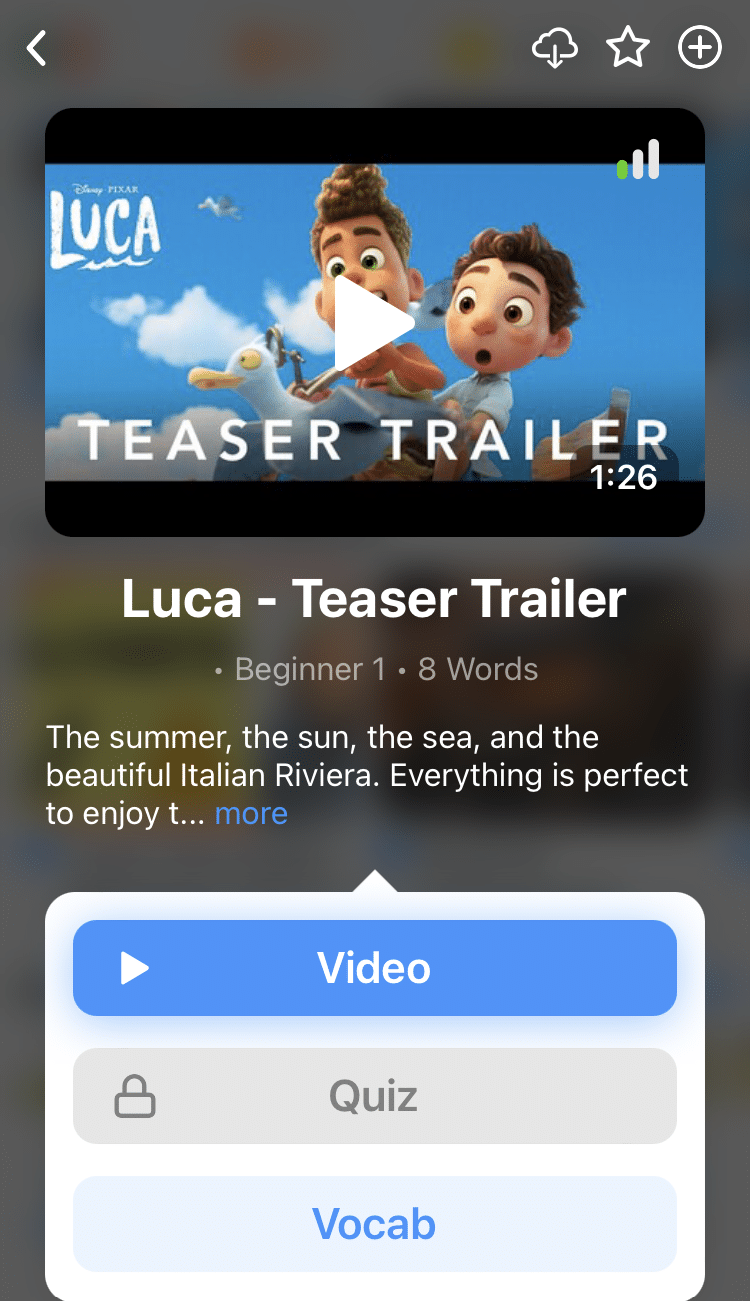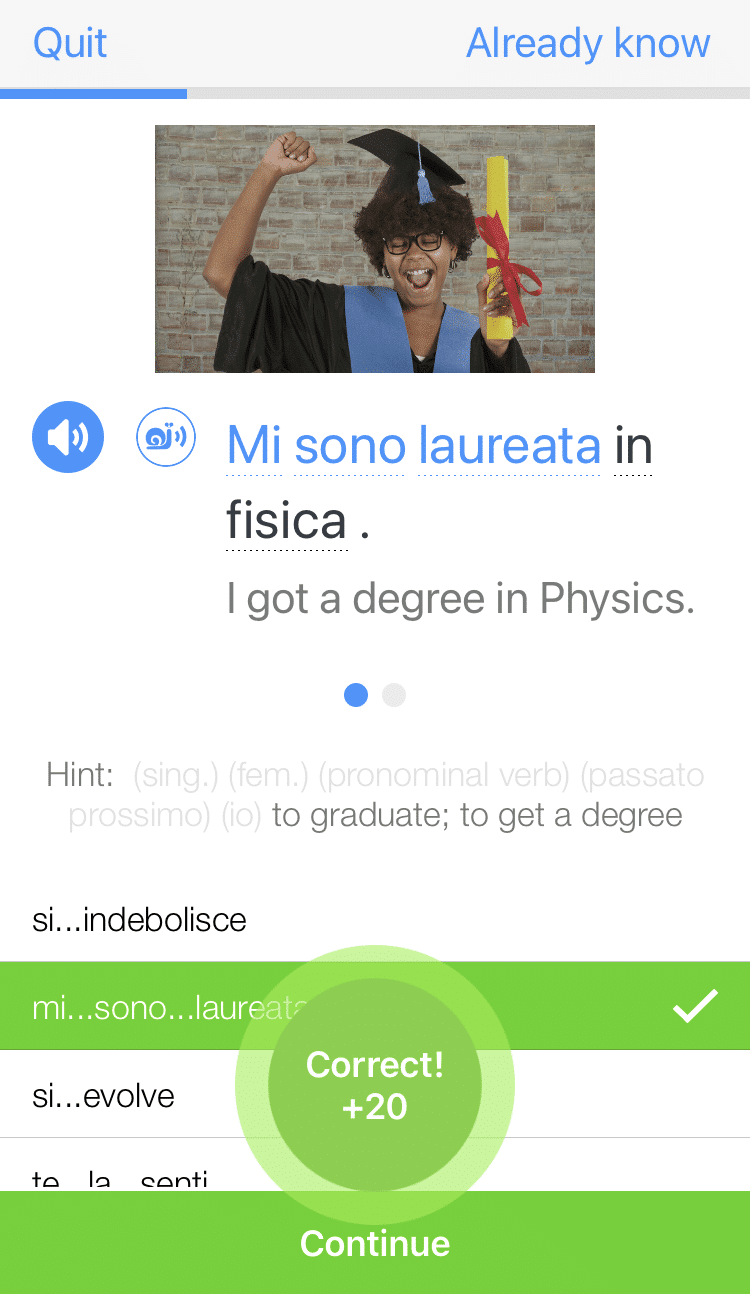
How to Introduce Yourself in Italian
In Italy, foreigners are often pulled into conversations, invited to parties and—in many cases—made to feel like family.
Relationships are important to Italians, so knowing how to introduce yourself in Italian may involve more than just a handshake and a smile.
In this post, I’ll walk you through the phrases to use, some cultural notes to keep in mind regarding Italian introductions and where you can learn more about these introductions.
Let’s learn how to make friends in Bel Paese (the Beautiful Country)!
Contents
- 1. Ciao (Hello / Goodbye)
- 2. Salve (Hello)
- 3. Buongiorno (Good day)
- 4. Mi chiamo … (My name is …)
- 5. Sono di … (I’m from …)
- 6. Sono … (I am …)
- 7. Sono un … (I’m a …)
- 8. Piacere di conoscerti! (Nice to meet you!)
- 9. Sto restando … (I am staying …)
- 10. Come stai? (How are you?)
- 11. Come va? (How’s it going?)
- 12. Bel tempo! (Nice weather!)
- 13. Dov’è il più vicino … (Where is the closest …)
- 14. Arrivederci (Goodbye)
- Some Cultural Notes About Introducing Yourself in Italian
- Resources for Learning Italian Introductions
- And One More Thing...
Download: This blog post is available as a convenient and portable PDF that you can take anywhere. Click here to get a copy. (Download)
1. Ciao (Hello / Goodbye)
A smile and ciao are usually enough to break the ice in Italy.
Ciao is one of those flexible greetings that can mean both “hello” and “goodbye.” In other words, you can use it to start or end a conversation.
After you’ve gotten to know someone a bit, they might greet or leave you with a ciao-ciao . It’s a less formal version of the standard ciao, kind of like the American “bye-bye.” Once you feel comfortable with someone, use this friendlier version, and you might get a smile in return!
2. Salve (Hello)
If you’re meeting someone in a formal setting, salve is a great choice for saying hello. It’s a bit more formal than ciao.
Not sure which version of “hello” to use? Remember that you really can’t go wrong with salve. If it feels a bit reserved, that’s fine. Better to be cautious than appear disrespectful!
3. Buongiorno (Good day)
Italians are wonderfully welcoming! Not only do they say hello, but they also like to wish people a good day. It’s acceptable to opt for buongiorno instead of ciao or salve.
You may hear buongiorno at any time of the day, but be aware that you may also hear buon pomeriggio (good afternoon) or buonasera (good evening), depending on the speaker’s preference and the time of day.
4. Mi chiamo … (My name is …)
When you meet someone for the first time, the first thing you should share is your name. Introduce yourself by saying Mi chiamo [your name].
5. Sono di … (I’m from …)
Letting someone know you’re a visitor or that you relocated from somewhere else is a good ice breaker as well.
There’s no need to get fancy with this. Just say where you’re from in English to get the conversation moving. For example, “Sono di California” (“I’m from California”) works just fine!
6. Sono … (I am …)
Speaking of which, “I am” opens a lot of conversational doors. It’s one of those amazing phrases that reveals a lot even though it’s so simple.
For example, you can try some of these to show what you’re doing in Italy:
| Examples of "Sono" Phrases in Italian | English Translation |
|---|---|
| Sono in vacanza. | I am on vacation. |
| Sono qui per la cultura. | I am here for the culture. |
| Sono in Italia per studiare. | I am in Italy to study. |
| Sono qui per studiare l'italiano. | I am here to study Italian. |
| Sono qui per lavorare. | I’m here to work. |
| Sono qui per un mese. | I am here for a month. |
| Sto visitando. | I am visiting. |
You’ll notice that the last example uses sto instead of sono. The reason for this is a bit too complicated to cover in this post, but you can find more information on ItalianPod101.
7. Sono un … (I’m a …)
Sharing what you do for a living is a fantastic way to connect with a stranger. Maybe you have professional interests in common!
Some common professions are listed below, with their “male / female” forms:
| Common Professions in Italian (Male) | Common Professions in Italian (Female) | English Translation |
|---|---|---|
| Dottore | Dottoressa | Doctor |
| Parrucchiere | Parrucchiera | Barber, Hairstylist |
| Professore | Professoressa | Professor |
| Cameriere | Cameriera | Waiter / Waitress |
| Giardiniere | Giardiniera | Gardener |
| Alunno | Alunna | Student |
Don’t forget to choose the form of the word appropriate to your gender!
8. Piacere di conoscerti! (Nice to meet you!)
If Piacere di conoscerti feels a bit too formal, it’s perfectly acceptable to just say Piacere! (Pleasure!) The abbreviated version may feel a bit awkward, but you’ll often hear it in Italy.
9. Sto restando … (I am staying …)
If you’re just visiting, you can also talk about where you currently reside. Here are some options for completing this phrase:
| Examples of "Sto Restando" Phrases in Italian | English Translation |
|---|---|
| a Roma | in Rome |
| a Napoli | in Naples |
| a Firenze | in Florence |
| in un albergo | in a hotel |
| con un amico | with a friend |
10. Come stai? (How are you?)
You can also politely inquire about your new acquaintance’s health and well-being. This is usually not meant literally, and you should be prepared for someone to ask you this question in return.
Depending on how you feel, you can respond with either Sto bene (I’m fine) or Non molto bene. (Not very well.)
11. Come va? (How’s it going?)
This is more informal than come stai but the response is an easy one— bene, grazie. (Well, thanks.)
12. Bel tempo! (Nice weather!)
Chatting about the weather is a super effective way to cozy up to someone and keep a conversation going beyond introductions.
| Example Phrases to Talk About the Weather in Italian | English Translation |
|---|---|
| Sembra che pioverà. | It looks like it's going to rain. |
| Il sole è fantastico! | The sunshine feels great! |
| Oggi è ventoso. | It's windy today. |
13. Dov’è il più vicino … (Where is the closest …)
You might have introduced yourself to a stranger because you needed to ask for directions. Or you might just want some recommendations for spots to visit!
Taking the conversation in this direction gives the person you’re asking the opportunity to point out places that they feel personally connected to. Who knows? It may even get you a friendly dinner date at a cozy restaurant!
Some places to inquire about are:
| Example Phrases to Talk About Places in Italian | English Translation |
|---|---|
| albergo | hotel |
| buon ristorante | good restaurant |
| cinema | movie theater |
14. Arrivederci (Goodbye)
Once you’ve reached the end of your first conversation with your (hopefully) new friend or business associate, don’t forget to bid them farewell.
Arrivederci! and a quick handshake or small wave will leave a great first impression.
To see these expressions in action, check out the video below from ItalianPod101.com:
Some Cultural Notes About Introducing Yourself in Italian
- Italian greetings and interactions are often more tactile than you might be used to in other cultures. For instance, some men kiss when saying hello or goodbye, although whether they do this depends on their relationship and how close they are (father and son, brothers or friends). In cities as well as smaller towns, it’s common to see women (and sometimes, even men) walking arm in arm. It’s also customary to show respect for the elderly by standing up when they enter the room.
- Typically, when meeting someone for the first time, a firm handshake while maintaining eye contact will do. The tone of a first meeting will be friendly yet respectful, in a way that’ll be familiar to many cultures.
- Showing respect is incredibly important in first meetings. To be safe, stick to formal language until you develop a closer relationship with someone.
- Eventually, you may start greeting each other with air kisses. But remember to wait until the other person instigates this! Also, you’ll need to nail that first impression.
Resources for Learning Italian Introductions
Watching native Italian speakers interact is an excellent way to see how strangers, friends and family act around each other. In a culture that emphasizes body language, seeing and understanding these natural interactions can help you make a good first impression.
One of the ways you can learn how to introduce yourself in Italian without actually visiting an Italian-speaking place can be through movies or other online resources. For instance, you can watch Italian YouTubers to see how native speakers interact with each other while introducing themselves.
You can also use an immersion language program like FluentU.
FluentU takes authentic videos—like music videos, movie trailers, news and inspiring talks—and turns them into personalized language learning lessons.
You can try FluentU for free for 2 weeks. Check out the website or download the iOS app or Android app.
P.S. Click here to take advantage of our current sale! (Expires at the end of this month.)
A good attitude and a friendly smile can go a long way when making new friends. But it takes more than that to effectively introduce yourself in Italian. Knowing what to say is essential, too.
Use some—or all!—of these indispensable terms to introduce yourself and be part of the Italian social scene.
Download: This blog post is available as a convenient and portable PDF that you can take anywhere. Click here to get a copy. (Download)
And One More Thing...
If you're as busy as most of us, you don't always have time for lengthy language lessons. The solution? FluentU!
Learn Italian with funny commericals, documentary excerpts and web series, as you can see here:

FluentU helps you get comfortable with everyday Italian by combining all the benefits of complete immersion and native-level conversations with interactive subtitles. Tap on any word to instantly see an image, in-context definition, example sentences and other videos in which the word is used.

Access a complete interactive transcript of every video under the Dialogue tab, and review words and phrases with convenient audio clips under Vocab.

Once you've watched a video, you can use FluentU's quizzes to actively practice all the vocabulary in that video. Swipe left or right to see more examples of the word you’re on.

FluentU will even keep track of all the Italian words you’re learning, and give you extra practice with difficult words. Plus, it'll tell you exactly when it's time for review. Now that's a 100% personalized experience!
The best part? You can try FluentU for free with a trial.
Start using the FluentU website on your computer or tablet or, better yet, download the FluentU app from the iTunes or Google Play store. Click here to take advantage of our current sale! (Expires at the end of this month.)



